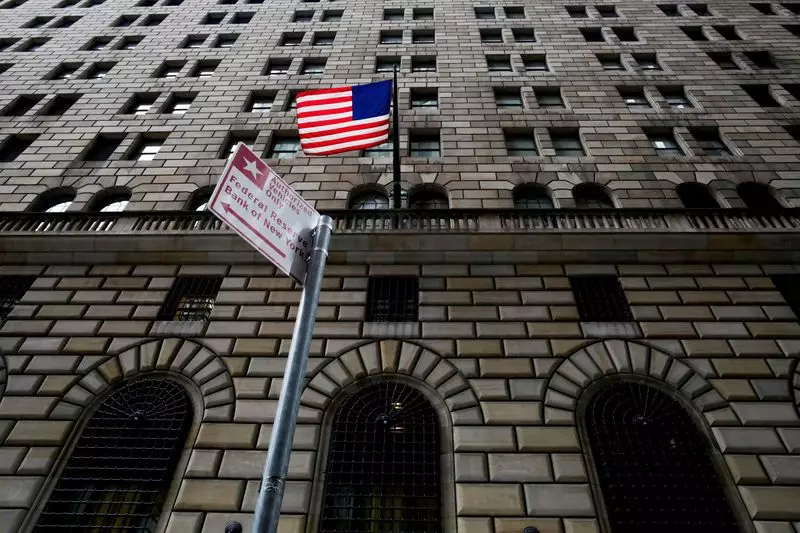The dynamics of global finance often revolve around the decisions made by major economic powers, with the U.S. Federal Reserve occupying a pivotal role. Recent developments illustrate how the Fed’s approach can have far-reaching consequences for emerging markets around the world. As central banks scramble to stabilize their currencies amid the challenges posed by shifts in U.S. monetary policy, the implications are profound and complex.
The Federal Reserve’s recent statements have caught the attention of global investors. By indicating a potentially slower pace for interest rate cuts in the coming year, the Fed has fueled concerns about inflation. Specifically, the anticipated policies of the incoming U.S. administration under Donald Trump—expected to include changes to immigration and trade—have triggered jitters in the markets. This uncertainty has caused U.S. Treasury yields to rise, pushing the dollar to its highest level against a basket of major currencies in two years.
These developments have sent shockwaves through emerging economies, as currencies such as the South Korean won, Indian rupee, and Indonesian rupiah have suffered significant declines. The South Korean won, in particular, dropped to a 15-year low, while the rupee delivered a record low performance. Simultaneously, the Indonesian rupiah fell to a four-month low. The MSCI index for emerging market currencies also mirrored this downturn, hitting a four-month low as investors reassess risk exposures.
The strengthening of the U.S. dollar poses a myriad of challenges for emerging markets. Higher U.S. interest rates often result in capital outflows from these markets as investors seek the safety and returns offered by dollar-denominated assets. This exodus can exacerbate currency depreciation, leading to inflationary pressures that can destabilize already vulnerable economies. Furthermore, the qualitative assessment from analysts reveals that the current situation echoes the turbulence observed last year, where emerging markets faced a barrage of capital flight and currency crises.
In response to the crisis, numerous central banks across Asia have enacted measures to defend their currencies. Key players, including South Korea, India, and Indonesia, have intervened by selling dollars to bolster local currencies. The Reserve Bank of India took decisive actions as the rupee plummeted beyond the psychological threshold of 85 to the dollar. Experts have warned that while such interventions can offer temporary relief, they are merely a stopgap measure. Over time, these central banks will need to reassess their monetary policies to adjust to the newfound reality of higher global rates.
The Brazilian real’s performance exemplifies the distress experienced by emerging markets. Following an initial $3 billion intervention aimed at stabilizing the currency, Brazil’s central bank found itself compelled to execute a second $5 billion intervention after the first proved insufficient. Ultimately, this additional measure did yield some positive momentum, as it allowed the real to close the session up over 2%.
In Indonesia, despite the urgent need for economic support, the central bank prioritized currency stability by refraining from rate cuts. Consequently, these actions forced policymakers into a balancing act: safeguarding currency values while also considering broader economic stability—a task that is only becoming more intricate in the face of external pressures.
While Asian central banks strive to manage the challenges posed by the dollar’s strength, analysts warn that reversing the downward trajectory of their currencies may remain a distant goal. The influence of carry trades on high-yield Asian currencies—traditionally a support mechanism—faces dilution as attributes of high volatility threaten this strategy’s viability.
The Fed’s recent guidance hints at a more hawkish approach than markets previously anticipated, with futures now suggesting only two rate cuts next year compared to earlier estimates that indicated four. This posture, compounded with the looming cloud of Trump’s tariff policies and economic reforms, has heightened the risks for emerging market economies that are still grappling with recovery from previous downturns.
The interplay between U.S. monetary policy and international markets underscores a pivotal moment for emerging economies. Their ability to adapt swiftly while managing currency volatility will determine not only their immediate economic climate but also their long-term resilience in an increasingly challenging global financial landscape. As Bart Wakabayashi aptly states, “the dollar is king right now,” signaling a need for vigilance and strategic foresight among emerging market practitioners.

